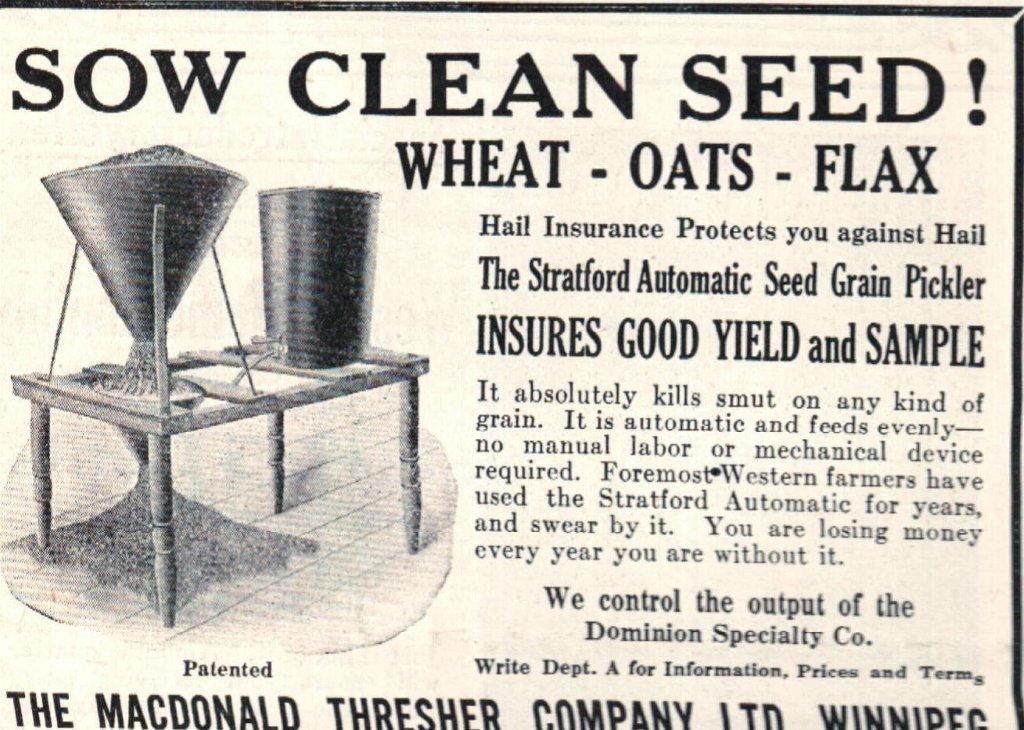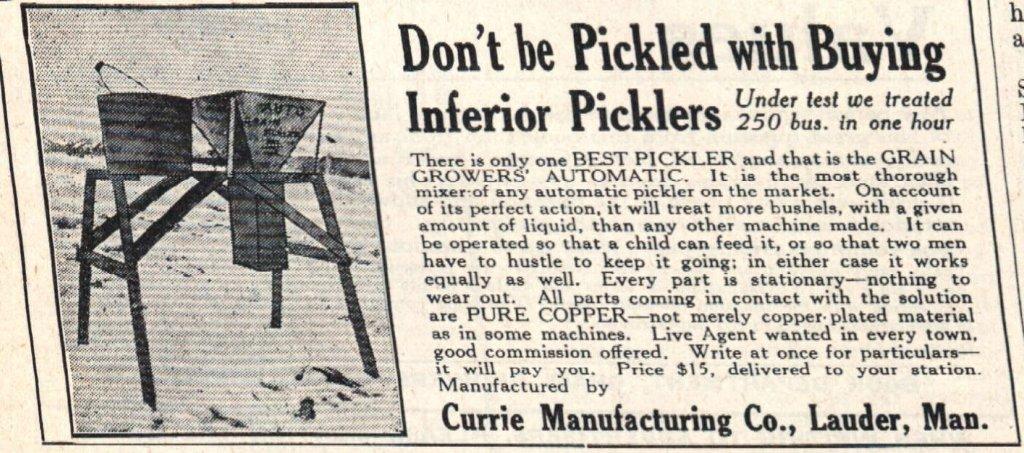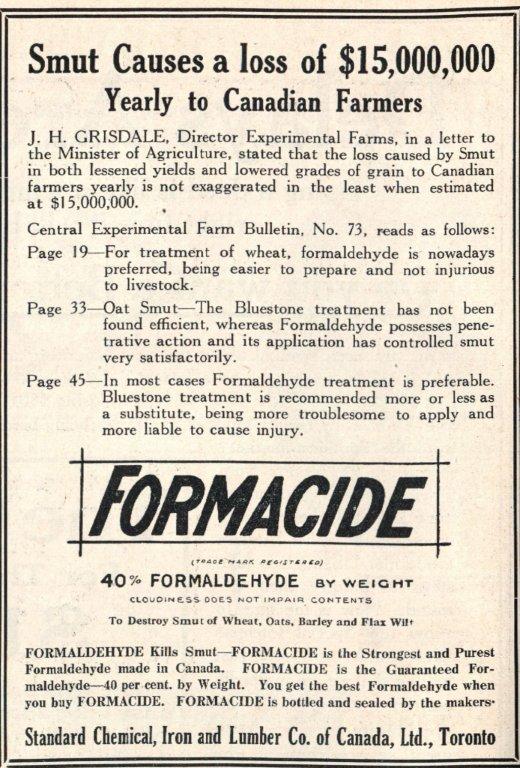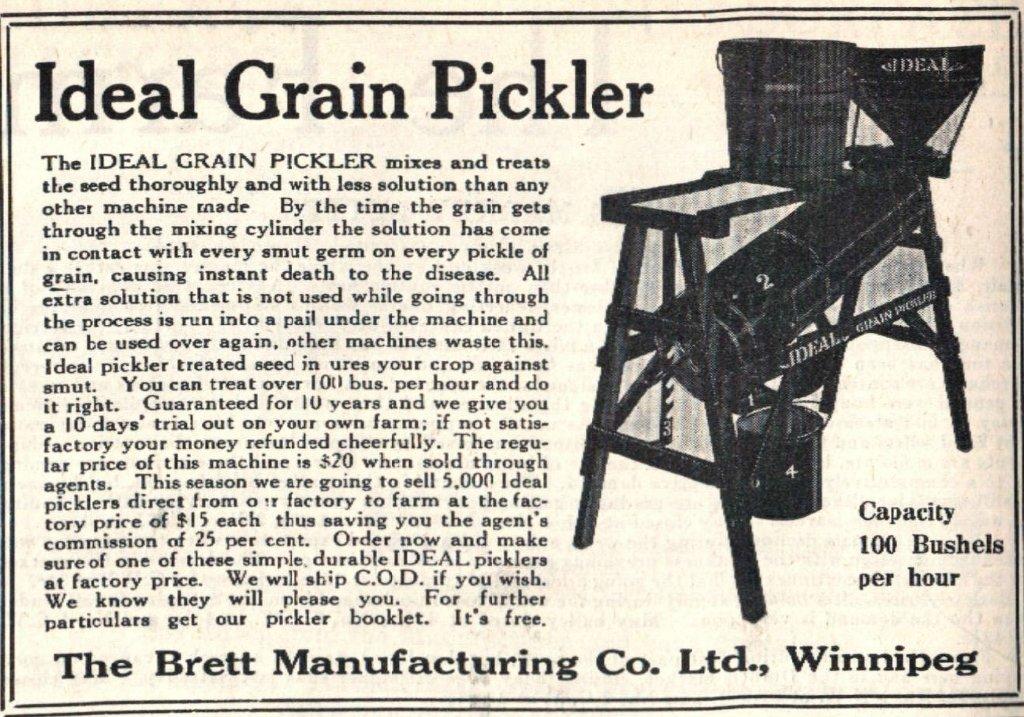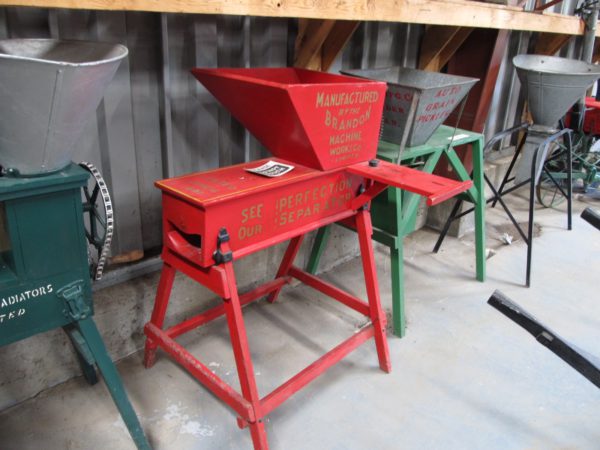
The collection contains a number of items in the Grain Pickler category. These items are built to a variety of designs. Grain Picklers attract some attention from Museum visitors as the idea of pickling grain is a strange one by today’s standards. However pickled grain was not meant to be eaten directly by people but refers to the soaking of seed grain in chemicals to control plant disease.
Smut, a fungal disease, was a common problem faced by early prairie grain producers. In barley, smut infections are more commonly known as loose smut while in wheat, smut infections are better known as bunt or stinking smut. It was found that soaking wheat and barley seed in solutions of bluestone (copper sulfate) was somewhat effective in combating smut. Then it was discovered that a solution containing formalin, a form of formaldehyde, produced better results. As the operation of soaking the seed in a chemical solution resembled making pickles to some extent, this operation became known as pickling grain. There were a variety of ways to soak the seed. One could obtain a barrel, fill it with the solution of formalin and then immerse a bag of seed in the barrel for 10 minutes, then pull the bag out and immerse the next bag. Two barrels could also be used with the grain being loose. One barrel was filled with the treating solution and then loose seed was shoveled into the barrel. When this seed had soaked for ten minutes then the solution could be drained off into the second barrel where additional solution could be added if necessary and seed then added to this barrel. The first barrel could then be emptied of seed which would be placed on a floor, covered by grain bags to slow down the escape of the formaldehyde and either left to dry or be loaded into the seed drill for immediate seeding. Loose grain loaded in the barrel had the advantage of letting the farmer skim off any floating materials such as awns, fragments of straw and smut balls. Manufacturers recognized opportunity and began to produce various designs of grain picklers which would treat seed with the formalin solution in a speedy fashion.
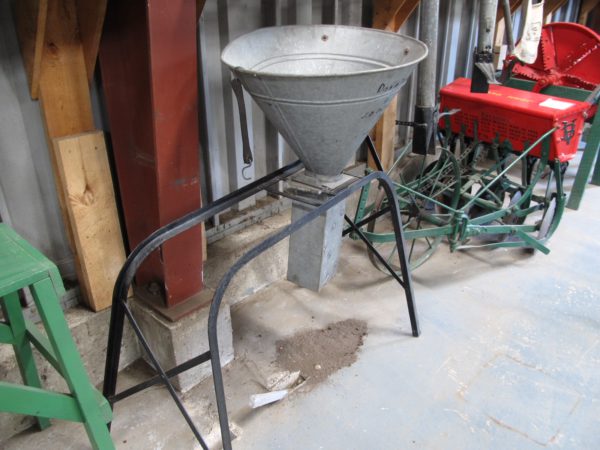
The images in this page are of some the grain picklers in the collection. With the advent of mercury and hexachlorobenzene (HCB) fungicides in the early 1930s, the need to “pickle” seed passed. Loose smut of barley is a disease that can destroy a large proportion of a barley crop. Loose smut replaces grain heads with smut, or masses of spores which infect the open flowers of healthy plants and grow into the seed, without showing any symptoms. Seeds appear healthy and only when they reach maturity the following season is it clear that they were infected. Common bunt, also known as stinking smut and covered smut is a disease of both spring and winter wheats. It is caused by two very closely related fungi, Tilletia tritici (syn. Tilletia caries) and T. laevis (syn. T. foetida).
Plants with common bunt may be moderately stunted but infected plants cannot be easily recognized until near maturity and even then it is seldom conspicuous. After initial infection, the entire kernel is converted into a structure which produces spores. The structure is light to dark brown and is called a bunt ball. The bunt balls resemble wheat kernels but tend to be more spherical. The bunted heads are slender, bluish-green and may stay greener longer than healthy heads. The bunt balls change to a dull gray-brown at maturity, at which they become conspicuous. The fragile covering of the bunt balls are ruptured at harvest, producing clouds of spores. The spores have a fishy odor. Intact bunt balls can also be found among harvested grain. Bunt was a serious issue on the Prairies and in the US in the pioneer era. Infection levels over 20% were common in Washington state in the early 1900s, and between 25-50% of the State of Kansas wheat crop was lost to stinking smut in 1890. Because of the dusty spore masses released during harvest, many “thresher” explosions occurred. Static electricity that developed around the combine machinery ignited the spores released by the threshing machine. In 1915, 160 such explosions were reported in Washington state. Threshermen began to ground threshing machines to prevent static electricity from developing and prevent these types of explosions. The reason smut in wheat became known as bunt was that a head of wheat when infected, had a black appearance and so appeared to be burnt. People first referred to the disease as burnt ear which was later shortened to bunt.



